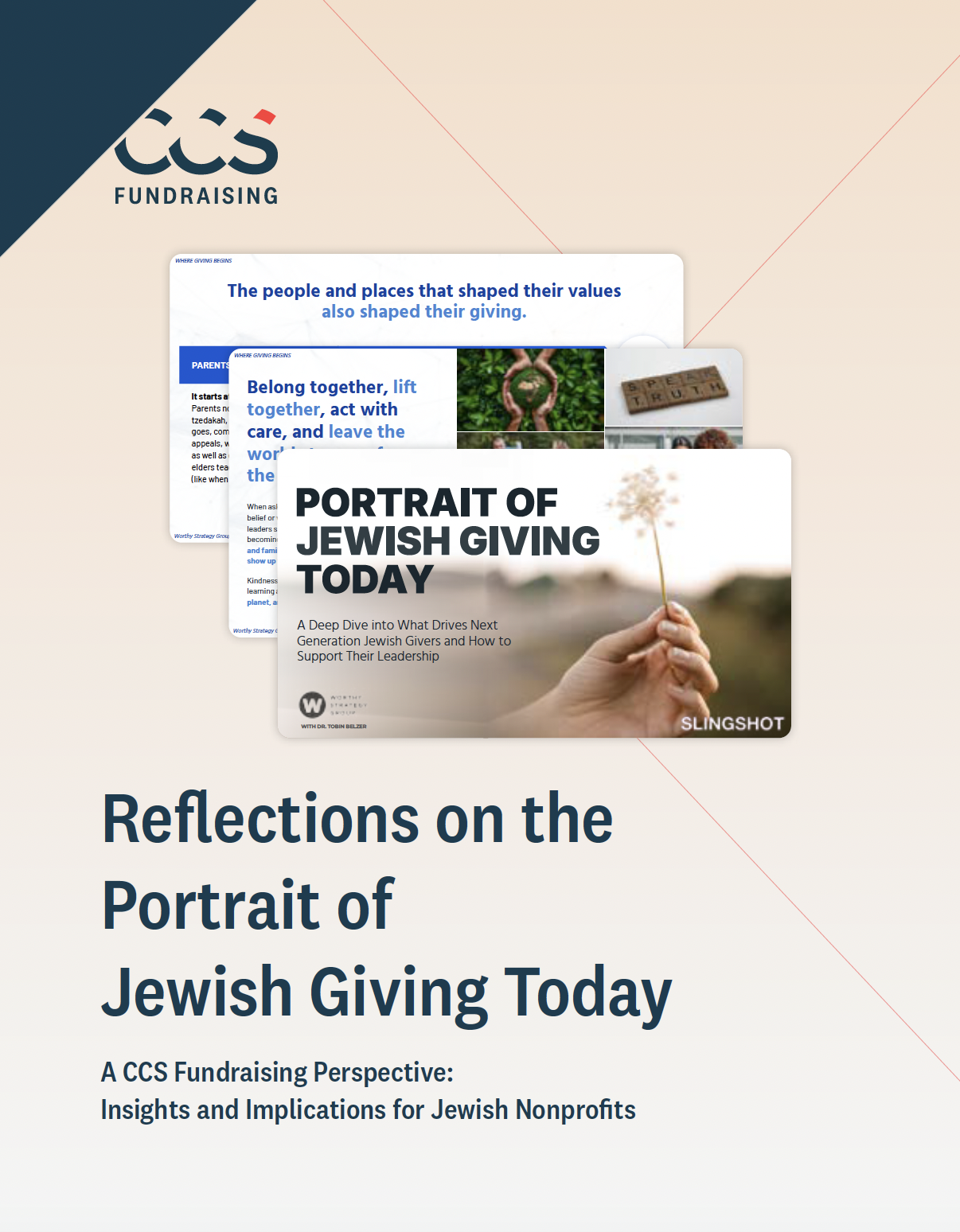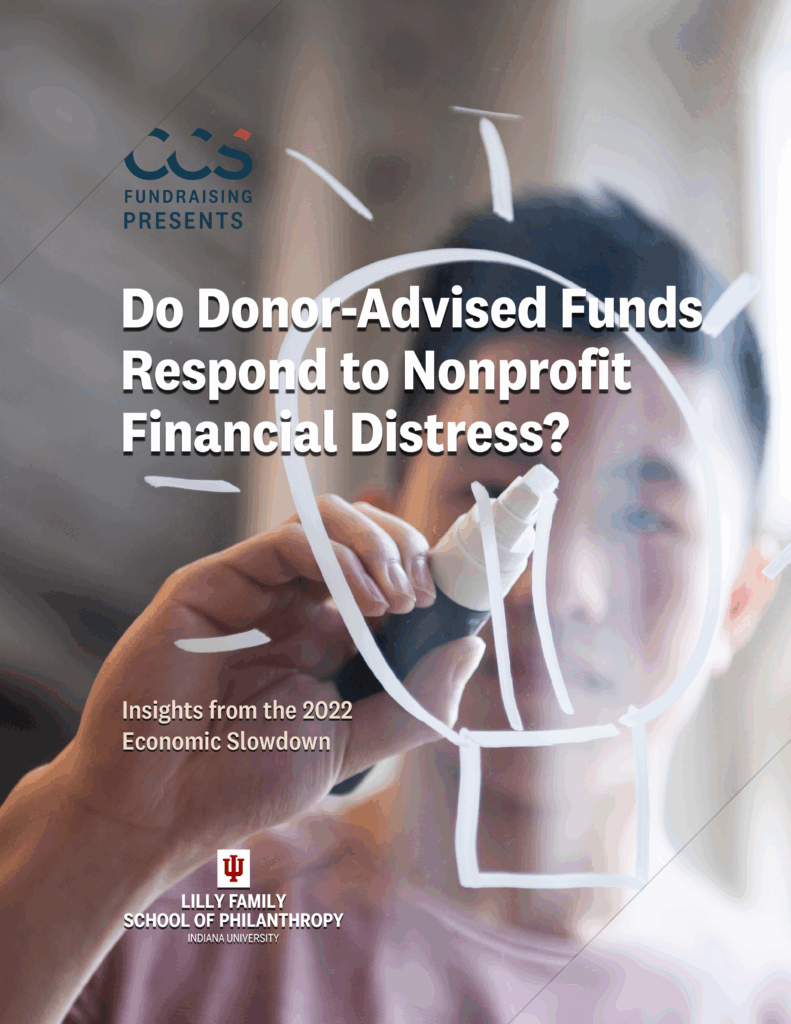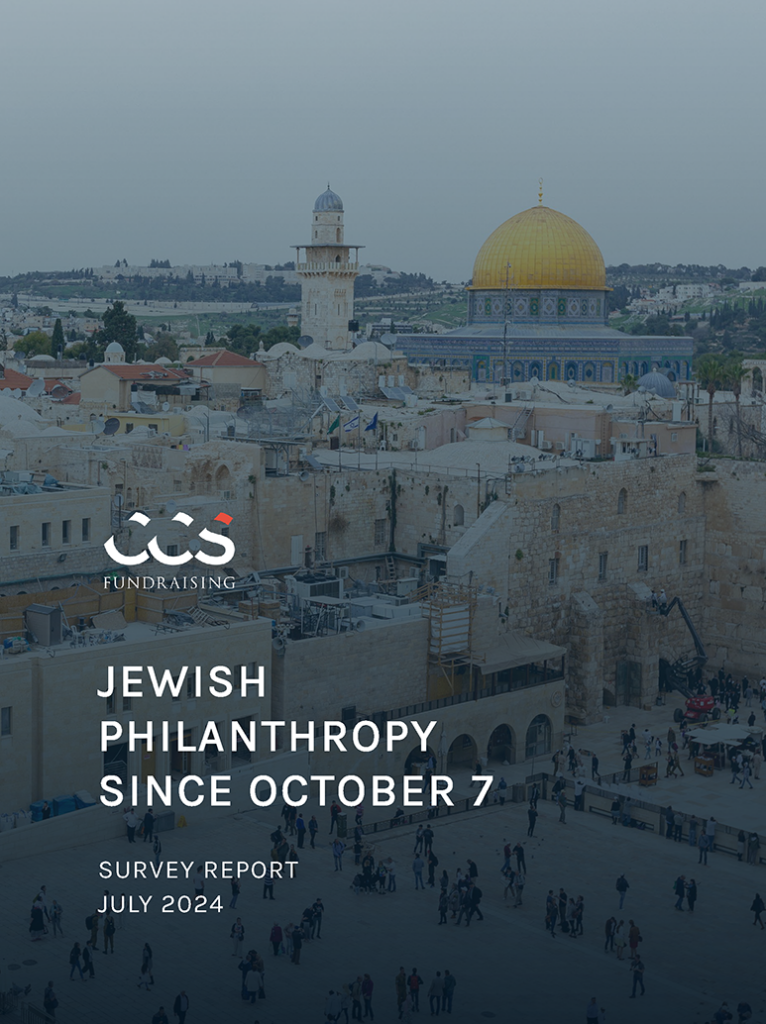In 2025, donor-advised funds (DAFs) represent nearly one in four charitable dollars given in the United States—cementing their role as a defining force in modern philanthropy. But according to a new report from CCS Fundraising and the Lilly Family School of Philanthropy Do Donor-Advised Funds Respond to Nonprofit Financial Distress?, the growing influence of DAFs raises a key question for many nonprofit leaders: how resilient are DAFs when economic conditions turn? [1]
These charitable giving accounts, established by a donor through a public charity, are among the most flexible tools for shaping when and how philanthropic dollars reach nonprofits. [2] Because they allow donors to contribute assets to a sponsoring organization, receive an immediate tax deduction, and recommend grants to nonprofits over time, DAFs have become philanthropy’s power grid—storing energy in times of abundance and channeling it rapidly when need surges.
As economic conditions shift, nonprofit leaders need to know how DAFs will respond in order to plan, communicate, and sustain operations through volatility.
“Understanding donor-advised funds goes beyond tracking dollars—it’s about seeing how generosity responds to real-world pressures,” says Peter Hoskow, Principal & Managing Director at CCS Fundraising. “Nonprofits that interpret these patterns can make strategic choices that protect services and strengthen community impact, even as conditions shift.”
Economic Downturns Reveal Nonprofit Vulnerability
Economic downturns expose what balance sheets often conceal. When revenue slows and costs rise, even well-managed nonprofits can find their resilience tested. Researchers measure this concept, known as financial vulnerability, as the degree to which an organization is at risk of reducing services or failing due to financial stress. [3]
Indicators include liquidity (cash reserves sufficient for at least three months of operations), the diversity of revenue sources, and reliance on fixed assets or concentrated funding streams. Organizations with low reserves or narrow income bases are more likely to experience shortfalls during downturns, particularly if they have a limited range of fundraising channels.[4] For smaller nonprofits, the impact can be even sharper: limited endowments and thinner margins leave less room to absorb shocks.
Yet DAFs, by design, should be insulated from these pressures. Their funds are already donated and invested for charitable purposes, meaning they are able to serve as a counteracting resource when other revenue sources falter.
But whether they do so depends on donor perception, awareness, and engagement.
DAFs are Powerful, But Responsive, During Economic Downturns
When the COVID-19 pandemic hit in 2020, donors with pre-committed philanthropic capital mobilized quickly. Grants from DAFs to human services organizations grew roughly 20% faster than overall giving to the same subsector. [1] That surge reflected both the urgency of the crisis and the liquidity built into DAFs, as the pre-donated funds were sitting and ready to deploy.
During the 2022 economic slowdown, DAFs were a stable funding source, but their grantmaking response was more modest. Overall grant growth slowed, and support was more selective—favoring nonprofits whose financial strain was tangible or clearly communicated. [1] Instead of the sweeping surge of crisis giving, DAFs appeared to respond to cues of vulnerability: smaller organizations, lower reserves, or community-based missions.
“The contrast between 2020 and 2022 shows how context shapes DAF giving,” says Hoskow. “Donors want to give, but are more responsive to visible signals of need. Nonprofits that highlight both challenge and impact can activate support more consistently.”
DAF Giving Reflects Organizational Rather Than Economic Factors
This pattern underscores a central insight for nonprofit leaders: perceived vulnerability, not just financial reality, drives donor action. [1] DAF donors, by design, have already committed their funds to charitable use. Their constraint is not capacity but attention. When a crisis dominates headlines or when an organization’s need is clearly communicated, those pre-positioned resources can move almost instantly. But when distress, such as rising costs, shrinking margins, and delayed grants, is diffuse, DAFs often mirror the broader hesitation of the philanthropic market.
In other words, visibility is the variable that converts latent generosity into active DAF giving. For leaders, financial transparency isn’t only a governance practice; it’s a communications imperative that directly influences donor behavior.
Hoskow emphasizes that connecting clear financial transparency with demonstrated impact is key to unlocking donor-advised fund support. “Nonprofits that make both their needs and their results visible are likely to see better engagement from DAF donors,” he says. “This clarity helps organizations convert attention into actionable support and strengthen long-term mission sustainability.”
Strategies to Engage DAF Donors During Economic Uncertainty
The data suggest three priorities for organizations navigating economic uncertainty.
- Know your margin. Start with a data-driven assessment of your organization’s financial vulnerability. How many months of cash reserves do you have? How diversified is your revenue? The Tuckman and Chang framework offers practical indicators (liquidity, equity balance, and revenue concentration) that can help boards and executives gauge their risk exposure. If your margins are thin, make DAF fundraising an intentional part of your stability plan. [1]
- Don’t be afraid to be vulnerable. DAF donors respond to what they can see. Transparency about scale, reserves, and impact can activate giving even when urgency is low. Share concrete metrics such as months of reserves or earned income percentages, explain how your organization is responsibly handling financial considerations, and connect them to mission longevity.
- Convert crisis DAF donors into long-term mission champions. After a surge of DAF gifts during crisis periods, follow up with structured stewardship. Provide consistent updates with quantified outcomes, and articulate how continued support strengthens resilience. Converting episodic generosity into enduring partnership is where DAF relationships evolve from reactive to strategic.
Visibility Should Stay… Visible.
DAFs have proven to be one of philanthropy’s most adaptable tools. While they are capable of fueling generosity even in uncertain times, their impact is not automatic. The lesson for nonprofit leaders is clear: when it comes to DAFs, visibility, not volatility, determines which organizations thrive during economic disruption.
—————
References:
[1] CCS Fundraising & Lilly Family School of Philanthropy (2025). Do Donor-Advised Funds Respond to Nonprofit Financial Distress?
[3] Tuckman, H. P., & Chang, C. F. (1991). A methodology for measuring the financial vulnerability of charitable nonprofit organizations. Nonprofit and Voluntary Sector Quarterly, 20(4), 445-460.
[4] Do Donor-Advised Funds Respond to Nonprofit Financial Distress? Insights from the 2022 Economic Slowdown (2025). CCS Fundraising, Giving USA.
[2] National Philanthropic Trust. “What Is a Donor-Advised Fund (DAF)?” Accessed October 16, 2025. https://www.nptrust.org/what-is-a-donor-advised-fund/.
More Insights
Fundraising From Family Foundations: An Introduction
Family foundations are an excellent source of nonprofit support. Read this article to learn about their goals, concerns, and how to connect to maximize impact for your nonprofit.
AI in Fundraising
Elevate your nonprofit’s fundraising strategies with artificial intelligence (AI)! CCS’s newest thought leadership provides valuable insights, strategies, and tools to propel your organization and achieve unprecedented mission success.




